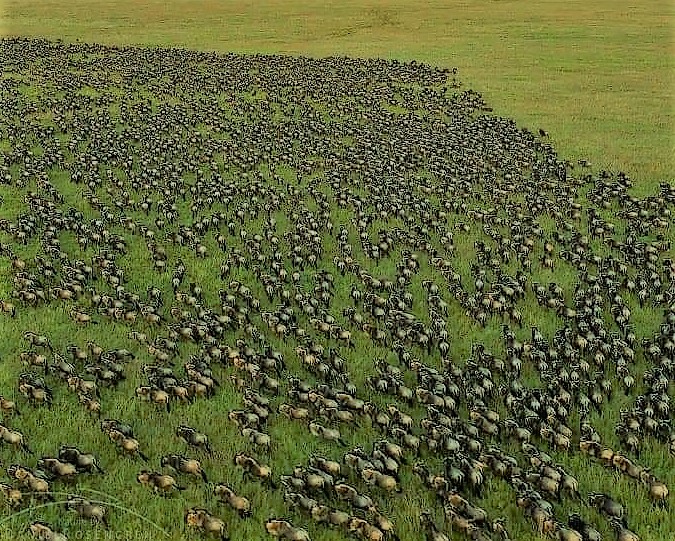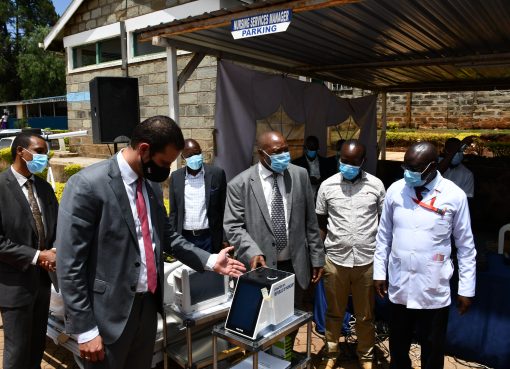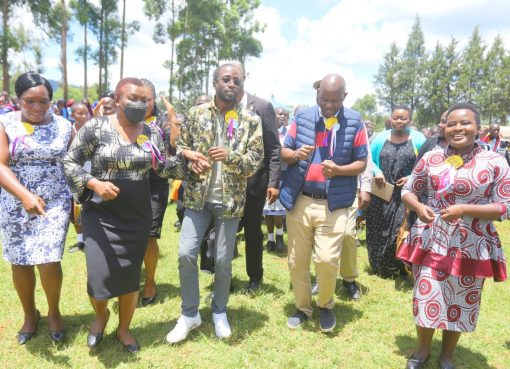Tourism is one of Kenya`s most important foreign exchange earner, earning the country 10 per cent of its revenue very year.
However, in 2020, this sector was brought to its knees due to the outbreak of the Covid-19 pandemic as Kenya and the whole world locked-up their borders, to curb the spread of the pandemic.
It’s therefore no surprise that in December of the same year, Tourism and Wildlife Cabinet Secretary (CS), Najib Balala, announced that Kenya’s tourism sector lost close to $1 billion (over Sh120Billion) in revenue between January and October,2020 when numbers of foreign tourists fell by two thirds due to Covid-19.
Popular tourist destinations such as the Maasai Mara in Narok County and other world-class wildlife reserves in the Country and holiday destinations on the Kenyan coast, witnessed a heavy thrashing by the effects of the disease.
Kenya’s tourism industry contributes 10 percent of economic output and employs over 2 million people, a large percentage of whom lost their jobs due to the pandemic.
Data from the Ministry website shows the sector raked in Sh163.5 billion in 2019 and it had been projected that the figure would grow by one per cent in 2020, but this was not to be, as international visitors fell to fewer than 500,000 in the first 10 months of 2020 as compared to 1.7 million in the same period in 2019, leading to a loss of Sh110 billion.
So important is Maasai Mara to Narok as a wildlife County that it earns more than 60 per cent of revenue from wildlife with the famous Maasai Mara Game Reserve, known worldwide for its spectacular wildebeest’s migration, providing the bulk of this revenue. The annual Great Migration of white-bearded wildebeest, also known as gnus, is a breathtaking sight that usually draws both local and international tourists to Kenya’s world famous Maasai Mara National Game reserve. It has been classified as one of the eight natural wonders of the world.
During the months of July to September every year, the Maasai Mara and Serengeti ecosystems experience large herds of wildebeest and zebras migrating from Serengeti National Park in Tanzania to Maasai Mara and back in search of pasture and water and giving birth, travelling a total of 800 kilometres or more during each cycle.
This year the grand crossing began on July 5 and is expected to continue as millions of the gnus cross the River Mara in their droves, oblivious of the danger lurking in the waters as crocodiles wait to make a meal out of any of them. Some then gracefully graze along the river on the border of Kenya and Tanzania.
Last year, the number of tourists who visited the reserve to witness this specular event dropped significantly owing to the coronavirus pandemic that adversely affected the tourism sector.
The General Manager of Kichwa Tembo and Bateleur camps in Maasai Mara, Mr. James Chege, is hopeful that tourists who started arriving late last month at the world-famous Maasai Mara Game Reserve, ahead of the glorious wildebeest migration will continue coming in to boost the tourism sector that was almost brought to its knees.
Most of the international tourists, who are from America and more than a hundred local tourists have checked in at the camp to witness the migration of the hundreds of wildebeest from the Serengeti National Park in Tanzania to Kenya.
Chege adds that the camp has embarked on undertaking laboratory tests for all arriving guests, admitting those found to be coronavirus free and having the rest go into isolation until when the Ministry of Health officials declare them free from the virus.
“We are working closely with the Ministry of Health officials and staff who are also tested frequently have been briefed accordingly on what to do as part of the measures to ensure the safety of staff and tourists and prevent the spread of the virus at the Game Reserve,” Chege said.
The Camps Manager notes that the tourism sector is still recovering from the effects of the pandemic that resulted in massive booking cancellations and calls on Kenyans to continue adhering to the Ministry of Health guidelines to prevent another lockdown that could bring the industry to its knees again.
At the camps, Covid-19 containment measures have elaborately been put in place with handwashing points available at every turn.
Captain Marion Micah Sugwara, from Air Kenya, who brought in a group of tourists from Mara touring to Kichwa Tembo as we interviewed Mr. Chege, adds that life wasn’t easy last year as no one was travelling or touring during the lockdown.
She added that the workers in the tourism sector like her literally struggled to put food on the table but added, things are looking up now with the partial reopening of the country and around the world.
She is elated at the resumption of their flight services for a month now and with the wildebeest migration that has attracted a good number of her flight passengers.
The wildebeest migration event is evidently exciting for not only those in the tourist industry but visitors who are looking to make memories out of this year`s event.One young couple who declined to be named and who will be spending their honeymoon at the Maasai Mara said they were super impressed with the hospitality and the strict Covid-19 prevention measures put in place by the camp to guarantee their safety and optimal conditions to enjoy their stay and looking forward to witnessing the migration.
By Mabel Keya- Shikuku and Vivian Hassan





